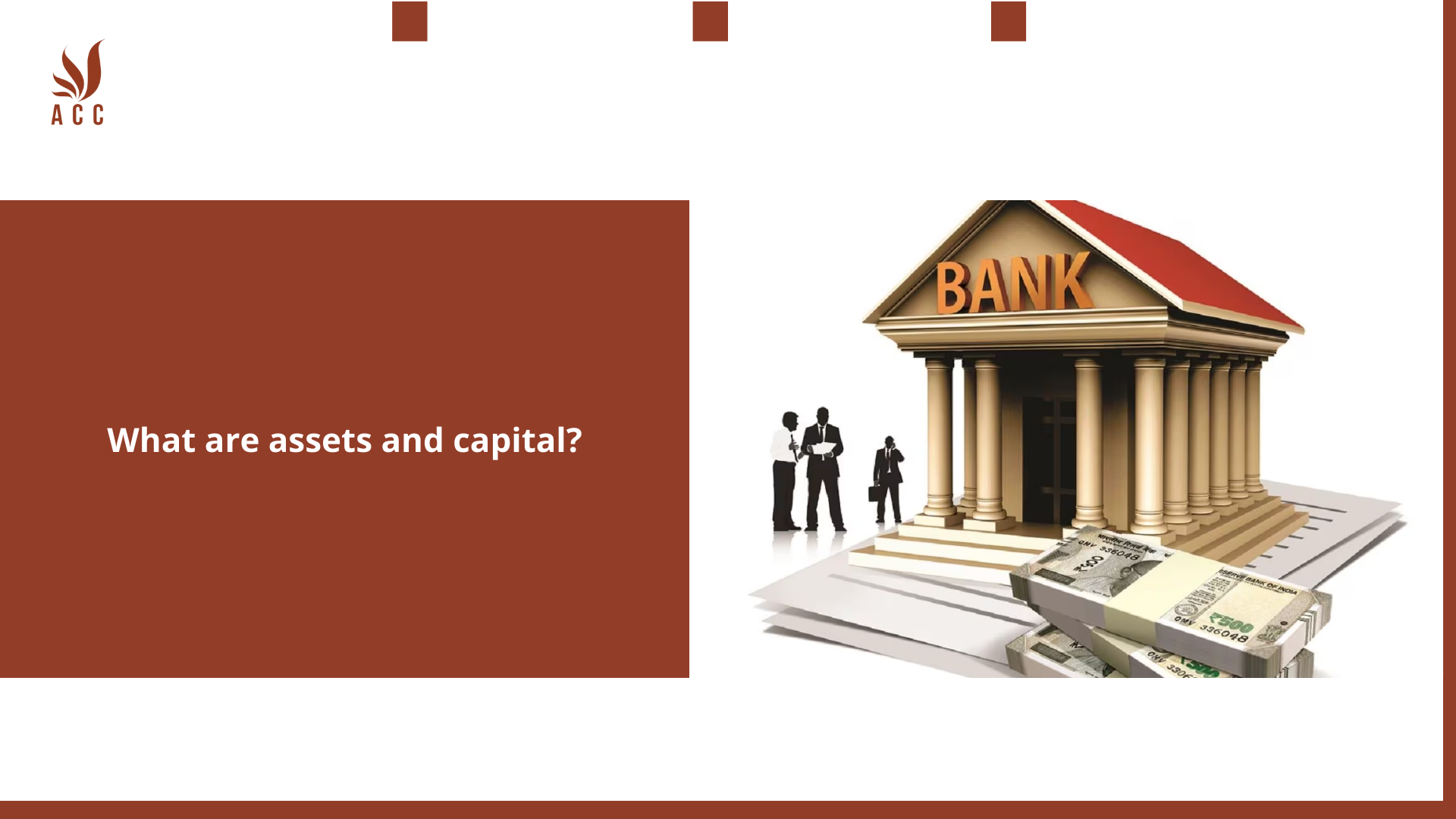
1. What are assets and capital?
Capital assets are a crucial part of our financial world, encompassing significant possessions like homes, cars, investment properties, stocks, bonds, and even collectibles or art. In the business realm, capital assets are integral to a company's operations and include assets with a useful life longer than one year. This article delves into the nuances of capital assets, their types, and how they are handled in taxation. So, let's embark on this informative journey together!
2. Types of Capital Assets in Business
Tangible Assets
Capital assets are the cornerstone of business operations. They are assets that contribute to a company's profit generation and are expected to serve their purpose for more than one year. On a company's balance sheet, capital assets are represented by the category known as property, plant, and equipment (PP&E).
Examples of PP&E include land, buildings, and machinery. These assets, while long-term in nature, can still be liquidated in dire situations, such as bankruptcy. Alternatively, businesses may choose to dispose of these assets when they are expanding and in need of more suitable alternatives.
In some cases, businesses even construct their capital assets. For instance, a company may purchase land and then invest in building a manufacturing plant on it. Such structures are also considered capital assets as they promise long-term benefits for the company.
Intangible Assets
While capital assets are typically tangible, they can also encompass intangible assets. Stocks, bonds, trademarks, patents, or other non-physical assets may qualify as capital assets, depending on their intended use. Additionally, capital assets may also include claims on indebtedness, mutual funds, or tenancy rights.
It's important to note that intangible assets have distinct rules when it comes to expensing or depreciating their value. They require periodic evaluations to ensure they maintain their value. Valuing intangible assets can be more challenging compared to tangible assets due to the less liquid and robust markets for the former.
3. Selling or Maintaining Capital Assets
Businesses often make decisions about their capital assets, whether to sell, maintain, or dispose of them. The options include selling, trading, abandoning, or losing the assets in foreclosures. When a business owned the asset for over a year, selling it typically results in a capital gain or loss, with tax implications.
Capital assets can also suffer damage or become obsolete. Impairment of an asset leads to a decrease in its fair value, affecting the balance sheet's book value and resulting in a loss recorded on the income statement. If the carrying amount surpasses the recoverable amount, the difference is recognized as an impairment expense.
4. Individuals and Capital Assets
Capital assets aren't exclusive to businesses; individuals can also own them. When an individual sells a capital asset, such as a stock, artwork, or an investment property, and makes a profit from the sale, it's considered a capital gain. The IRS mandates the reporting of such capital gains, subjecting them to capital gains tax.
Even an individual's primary residence qualifies as a capital asset. However, there are tax exclusions for homeowners. For couples filing jointly, a $500,000 tax exclusion is applicable, while single individuals can claim a $250,000 exclusion on capital gains from the sale of their primary residences. Notably, individuals cannot claim losses on the sale of their primary residence.
5. Capital Assets Recording and Taxation
The cost of capital assets encompasses various elements, including transportation, installation, and insurance costs associated with the purchased asset. These expenses are added to the asset's cost, affecting its overall value.
For businesses, the IRS treats the purchase of capital assets as capital expenses. Unlike most other expenses, capital expenses cannot be deducted in the year of purchase. Instead, they are capitalized as assets and written off incrementally over multiple years. This approach aligns with the matching principle of U.S. generally accepted accounting principles (GAAP), ensuring that the cost of the asset is recognized over the same period as the revenue it generates.
6. Depreciation of Capital Assets
Depreciation is a critical concept when dealing with capital assets. It involves spreading the expense of the asset over its useful life, rather than recognizing the entire cost in the year of purchase. This approach ensures that the expense aligns with the revenue generated by the asset each year.
Depreciation acknowledges that assets lose value as they age. The rate at which a company chooses to depreciate its assets can lead to differences between the book value and the current market value of the assets.
7. Capital Assets vs. Ordinary Assets
Distinguishing between capital assets and ordinary assets is crucial. Ordinary assets are expected to be used within the next year and include items like cash, inventory, prepaids, and accounts receivable. They are typically short-term in nature.
On the other hand, capital assets are long-term assets, and their benefits extend beyond one year. Businesses rely on capital assets for their operations, and they are usually classified as long-term assets on the balance sheet.
8. Capital Asset vs. Fixed Asset
In accounting, a fixed asset is a specific type of capital asset. Fixed assets are tangible and are intended for use for more than one year. Examples include buildings and property, plant, and equipment (PPE). The key distinction is that capital assets encompass a broader range, including non-fixed assets like stocks and bonds held for personal gain.
9. The Bottom Line
Capital assets are the cornerstone of both businesses and individuals' financial landscapes. They include tangible and intangible assets that promise long-term benefits. Understanding the intricacies of capital assets and their taxation is essential for sound financial management. Whether you're a business owner or an individual, capital assets play a vital role in your financial success. So, make sure to navigate this complex terrain with care and expertise.
10. Why should professionals use ACC Law Firm's capital Service?
-
Expertise in Legal Matters: ACC Law Firm specializes in legal services, providing professionals with access to experienced attorneys who can offer valuable legal guidance. Whether it's contract negotiations, intellectual property issues, employment matters, or any other legal concern, their expertise can be invaluable.
-
Tailored Legal Solutions: ACC Law Firm understands that every professional's needs are unique. They can customize their legal services to address the specific challenges and opportunities faced by professionals in different fields.
-
Risk Mitigation: Legal issues can pose significant risks to professionals and their businesses. ACC Law Firm can help identify and mitigate these risks, reducing the potential for costly legal disputes or compliance issues.
-
Resource Optimization: Professionals can save time and resources by outsourcing their legal needs to ACC Law Firm. This allows them to focus on their core competencies and business objectives, while leaving legal matters in the hands of professionals.
-
Access to a Network: ACC Law Firm may have a network of legal experts and professionals in various fields, which can be beneficial for clients seeking connections and advice beyond just legal services.
Q&A
Question 1: What are assets in the context of finance and accounting?
Answer 1: Assets are economic resources or valuable items owned by an individual, business, or organization. They represent things of value that can be used to generate future benefits. In accounting, assets are classified into various categories, including current assets (e.g., cash, accounts receivable), fixed assets (e.g., real estate, machinery), and intangible assets (e.g., patents, trademarks).
Question 2: What is the significance of assets in financial management?
Answer 2: Assets are significant in financial management because they are a key component of a balance sheet, which provides a snapshot of an entity's financial health at a specific point in time. Assets are valuable for generating revenue, providing collateral for loans, and assessing an entity's overall financial strength. Proper management and allocation of assets are essential for financial stability and growth.
Question 3: What is capital in the financial context, and how does it relate to assets?
Answer 3: Capital, in the financial context, refers to the financial resources available to an individual, business, or organization. It includes the money invested, contributed, or retained to fund operations and acquire assets. Capital can be sourced from various places, such as shareholders' equity, loans, or retained earnings. While assets are items of value, capital represents the financial capacity or resources used to acquire and maintain those assets.
Question 4: How are assets and capital related in terms of a balance sheet?
Answer 4: In a balance sheet, assets and capital are interrelated. The balance sheet equation is:
Assets = Liabilities + Capital
This equation illustrates that an entity's assets are financed through a combination of liabilities (e.g., loans, accounts payable) and capital. The capital portion represents the ownership interest in the entity, which can come from shareholders' investments, retained earnings, or other sources. The balance sheet helps in tracking how assets are financed, and it must always balance, ensuring that assets equal the sum of liabilities and capital.
Nội dung bài viết:






Bình luận